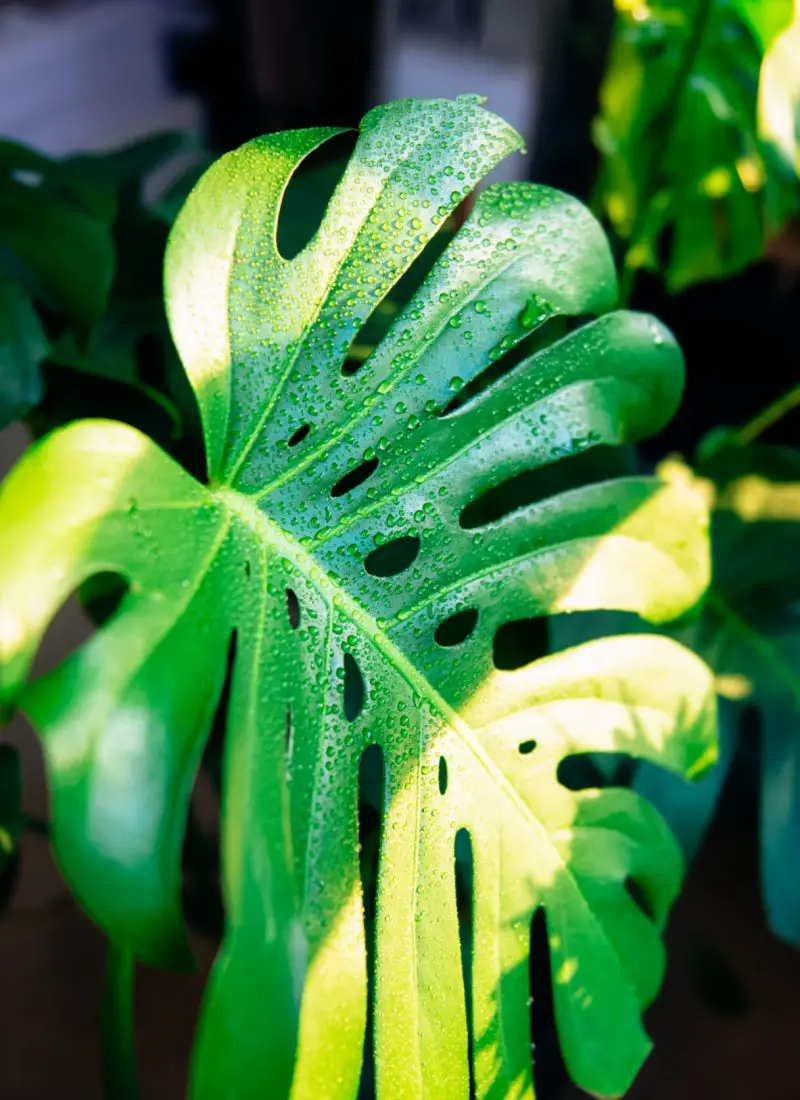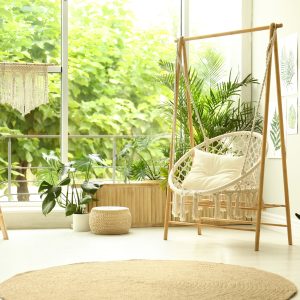
There is soil everywhere around us, most of the time anyway. But if you ever wonder what’s the best soil to use for your indoor plants, or whether you need special soil instead, then look no further because I have the answers right here.
Indoor plants require sterile, well-draining and nutrient-rich soil to grow well. It must be able to retain moisture and nutrients, provide good aeration for the roots, and be dense enough to support the plant. However, the mixture and ingredients will often vary depending on the plant type.
Below, I elaborate more on the various soil types for houseplants, soil amendments, and soilless mediums. But before that, here are some quick tips for your perusal:
Soil Tips:
- Let the plant’s surface soil dry out before watering to prevent fungus gnats. Avoid overwatering and throw out any excess water in the saucer after you’ve watered the plant. Alternatively, you can add decorative gravel to the top of the soil too.
- Use the correct soil for specific plants. The best potting soil for indoor plants will always be one that suits their type. For example, succulents and cacti prefer a well-drained soil mix with more sand, while African violets thrive in a soil mix with more peat moss and vermiculite.
- Don’t use garden soil for houseplants as it contains live microbes and insects. If you want to see no bugs in your indoor plants, stick to sterile potting soil.
With that said, let’s get into the different types of soil for your indoor plants:
(As an Amazon Associate, I earn from qualifying purchases.)
Potting Soil & Mixes
All plants require a growing medium to develop in, whether it be soil or otherwise. But like humans, there’s not a one-size fits all potting soil & mix for all plants. So, here are the various options you’ll need to acquire for specific plants:

- All-Purpose Potting Soil. This is a standard soil mix usually containing peat moss, perlite or vermiculite, and composted bark. It’s a versatile option suitable for most indoor plants, but not succulents and cacti. Depending on some brands, the ingredients might vary and even contain compost or added fertilizer. A popular brand people often go for is Miracle-gro Indoor Potting Mix from Amazon. It has an insane 49,008 ratings with an average of 4.7/5 stars!

- Succulent and Cactus Potting Mix. Because our prickly and fleshy desert plants are picky, they need a specific soil to mix that mimics the dry conditions they’re used to. Larger particles like gravel, sand, or perlite/vermiculite are added for better drainage and aeration, preventing root rot. You can even make your own by using a 60:40 ratio of gravel + perlite and potting soil!
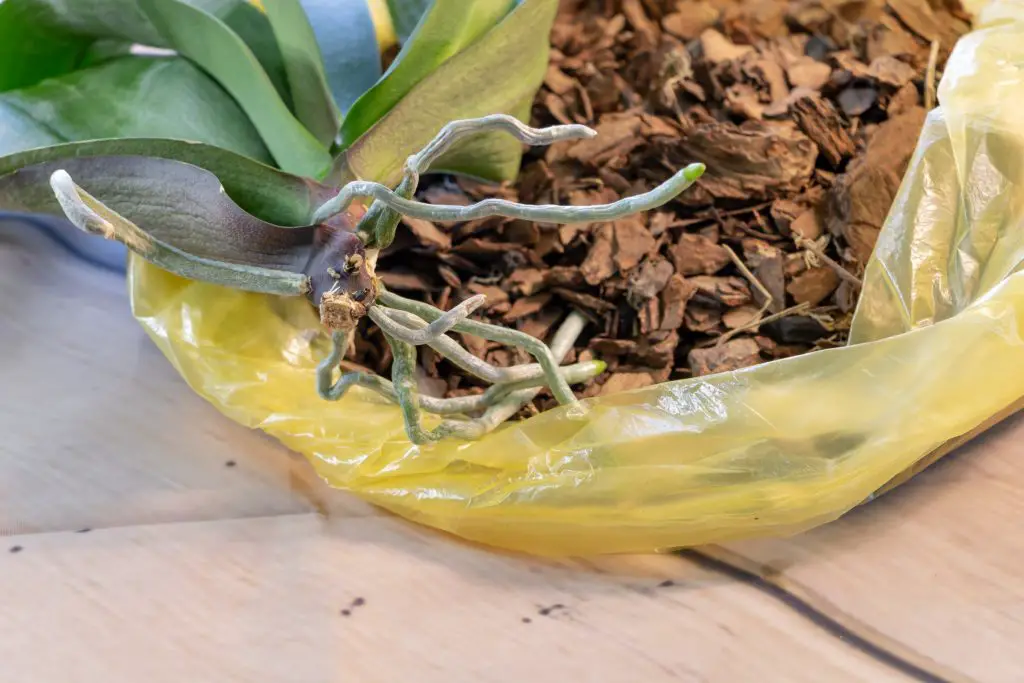
- Orchid Potting Mix. This pretty flowering plant is a bit of a diva when you want to grow them indoors because you can’t grow them in regular potting soil. To mimic their natural growing environment, you’ll need bark chips, charcoal, sphagnum moss and perlite to provide excellent drainage and air circulation. There are also specific orchid potting mixes for different types and species, so you may want to keep that in mind and get to know your orchid well first.

- African Violet Potting Mix. You can usually place African violets in an all-purpose potting soil, but they thrive better in a slightly acidic soil mix. A blend of peat moss, perlite, and vermiculite in a 50:25:25 ratio is often used, with a tablespoon of limestone added to lower the pH. If you don’t like using peat moss, you can substitute it with coco coir and add an African-Violet liquid fertilizer to boost its growth.
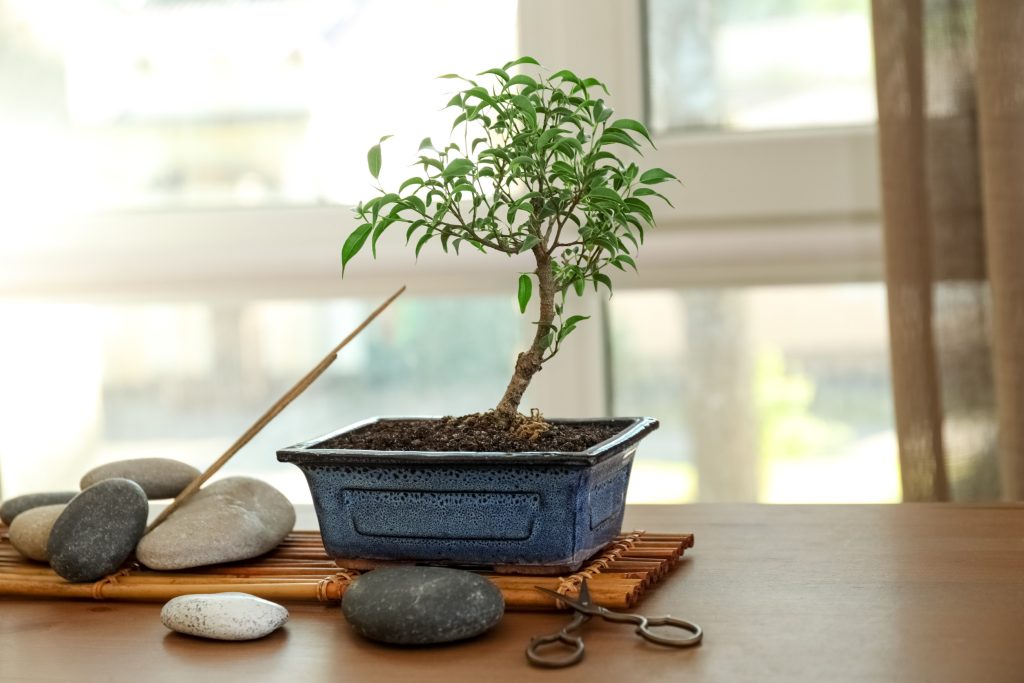
- Bonsai Potting Mix. If you’re getting into the more artsy side of plant growing, developing Bonsai trees may just be it for you. While not the most exciting bit, getting the soil right is important for Bonsais. A typical mix contains akadama (a Japanese hard-baked clay), pumice, and lava rock. Sometimes, pine bark and fine gravel are added too. The soil mix’s ratio differs according to the tree species used so be mindful of choosing the correct one for your Bonsai.

- Citrus Potting Mix. For the most part, you can grow indoor Citrus plants in an all-purpose potting mix. But you’ll often need to amend it with some aged compost or slow-release fertilizer, additional perlite or vermiculite and even bark chips.
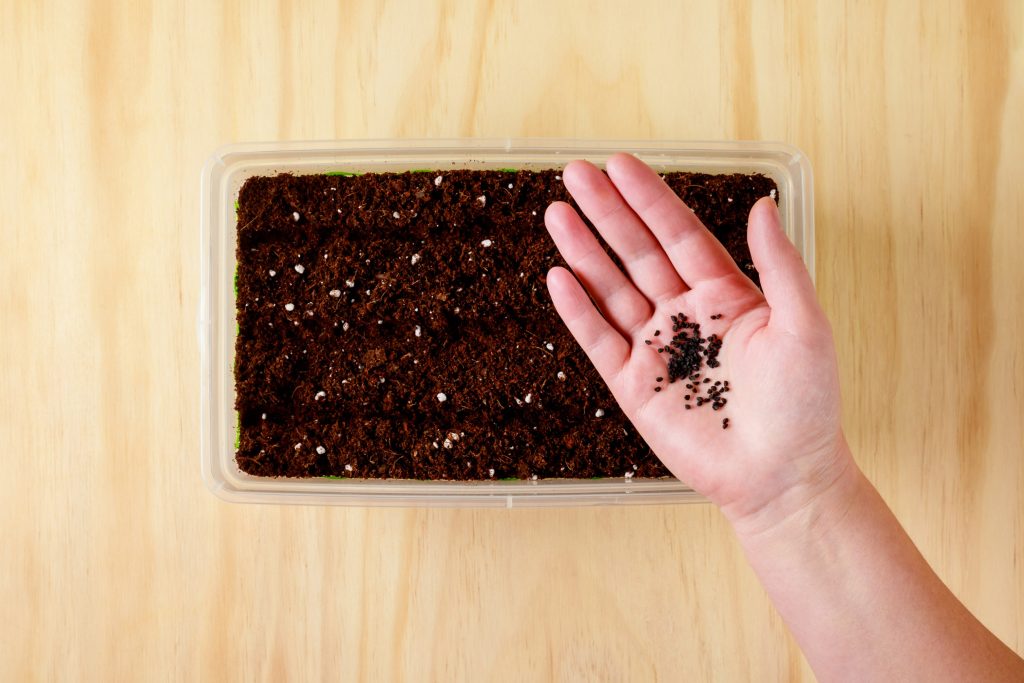
- Seed Starting Mix. This specific mix is typically finer and lighter than regular potting soil, allowing young roots to develop easily. It often contains various blends of peat moss, vermiculite/perlite, and coco coir. You’ll notice there is no added fertilizer or compost into the mix because seeds don’t need additional nutrients during the germination process.
This is not an exhaustive list of all the different types of soil for indoor plants. There are always going to be more out there for various houseplants. But when in a pinch, you can always use an all-purpose potting soil and use soil amendments to make it better for your specific plant.
Soil Amendments
These are materials added to soil to improve its physical properties, such as water retention, permeability, water infiltration, drainage, aeration, and structure. The goal, as always, is to provide a better environment for the plant’s roots. Here are some common soil amendments used for indoor plants:

- Coconut Coir/Coco coir. This is a by-product of the coconut industry and is made from the husk of the coconut. It is often used as a sustainable alternative to peat moss and has excellent water retention properties. It also helps to improve soil aeration and structure, making it easier for plant roots to grow.

- Peat Moss. This is sphagnum moss that has decomposed in peat bogs and is dug from the ground. It’s excellent at retaining water when added to the soil. However, it is acidic, so it’s mostly suitable for plants that thrive in slightly acidic soil environments. Its sustainability has also been a concern for several years now, as it tends to be harvested faster before it has time to develop again.

- Sphagnum Moss. This moss grows in peat bogs, just like peat moss, but is found on the surface and hasn’t decomposed yet. It has excellent water-holding capacity but less retentive than that of peat moss, which is perfect for plants like orchids and succulents. Its pH is also neutral, so you can add it to most indoor plants. But other than that, it can also be used for decorative purposes and as liners in hanging baskets.

- Perlite. This is a type of volcanic glass that has been heated until it expands. It is lightweight and porous, helping to improve soil aeration and drainage. It is often added in potting mixes to prevent soil compaction, allowing excess water to pass through easily.

- Vermiculite. This is a mineral that expands when heated. It has a high water-holding capacity compared to perlite and helps loosen the soil structure to prevent compaction. It’s also often added in the soil to improve drainage in combination with other soil amendments like peat moss or compost. Other uses also include using it as a growing medium for seeds to prevent them from drying out.

- Compost. This is made from decomposed organic matter and is very rich in nutrients. Not only is it a good slow-release fertilizer, it also helps improve soil structure so it’s no longer packed tightly. You can easily make some on your own at home from kitchen scraps and yard waste. Here’s an article all about composting for you to get started!
Alternative Plant Medium (Soilless)
When it comes to indoor gardening, traditional soil isn’t the only option for growing plants. There are some soilless mediums people like to use as well, like the following:

- LECA.
Lightweight Expanded Clay Aggregate, or LECA, is a popular alternative to traditional potting soil. This medium is made by heating clay to high temperatures in a rotary kiln, which causes the clay to expand into lightweight pebbles that are porous and rich in nutrients. LECA is commonly used in hydroponic systems, but it’s also suitable for indoor plants.
Here are the pros and cons of using LECA in place of regular soil:
| Advantages | Disadvantages |
| Good Moisture-Retention: LECA pebbles absorb the water and expands, releasing it slowly for the plant’s needs. | No Nutrients: LECA does not provide any nutrients on its own, so you’ll need to supplement with a hydroponic nutrient solution. |
| Good Aeration: The spaces between the LECA pebbles promote airflow, providing oxygen to the plant roots. | Expensive: It’s most costly than potting soil, about 3-4 times more! |
| Reusable: LECA can be cleaned and sterilized between uses, making it a cost-effective and environmentally friendly option. | Not Suitable for Drought-Tolerant Plants: It’s only best for houseplants that thrive in constant damp conditions. |
| Neutral pH: LECA has a neutral pH, which is suitable for most indoor plants. |

- Water Beads/Water Gel
Water beads, also known as hydrogel beads, are a type of water-absorbing polymer. They start as tiny hard pellets, but when soaked in water, they absorb the liquid and expand into squishy, gel-like beads. Water beads are often used in decorative arrangements, but they can also be used as a growing medium for indoor plants.
Here are the pros and cons of using water beads:
| Advantages | Disadvantages |
| Great Water Retention: Water beads can absorb and retain a large amount of water, which can then be slowly released to the plant roots. | No Nutrients: Water beads do not provide any nutrients, so a nutrient solution will need to be added. |
| Aesthetically Pleasing: Water beads come in a variety of colors, making them an attractive option for displaying indoor plants. | Regular Cleaning: Water beads can get mold or become slimy if not properly cared for, so frequent washing is necessary. |
| Non-Toxic: Most water beads are non-toxic and biodegradable, but be sure to check the product label first just in case. | Not Suitable for All Plants: Only certain houseplants like Lucky Bamboo and Arrowhead plant will do well in this watery type of medium. |
Frequently Asked Questions:

What is the best potting soil for outdoor plants?
A well-draining mix that is rich in organic matter, is the best potting soil for outdoor plants. It should contain compost, peat moss or coconut coir for moisture retention, perlite or vermiculite for aeration, and a slow-release fertilizer like aged compost for nutrients. But the specific ratio will vary according to plant type.
How to make potting soil for indoor plants?
Mix 60:30:10 parts of peat moss or coconut coir to perlite or pumice, and compost or worm castings. This creates a well-draining, nutrient-rich soil that allows most houseplants to develop well. Ensure to mix well thoroughly and adjust the mix based on the specific needs of your plant.

What’s the best soil for indoor plants at Home depot?
Miracle-Gro, Vigoro, and Proven Winners are usually the best soil for indoor plants found at Home Depot. They are all-purpose potting mixes that can cater to most plants, with added slow-fertilizers in them to boost their development. There are also specific soil-blend types you can purchase if your plants are of a more picky nature too.
What’s the best Lowe’s indoor potting soil?
Miracle-Gro Indoor Potting Mix and FoxFarm Ocean Potting Soil are one of the best-rated potting soil found in Lowe’s. It’s specifically designed for indoor plants and is enriched with slow-release fertilizers to support healthy growth. If they’re not your fancy, there are also other varieties of indoor potting soils.
Can you/I use any/normal soil for indoor plants?
It’s not recommended to use normal garden soil for indoor plants. Garden soil can compact in pots, preventing proper drainage and optimal root growth. It may also contain pests or diseases, which is why it’s better to use a sterile potting mix instead. However, some people are known to ‘sterilize’ their garden soil before using it in their potted plants. You can read all about that and more in this soil sterilization article!
References:
- Chalker-Scott, L. The Myth of Soil Amendments. S3. https://s3.wp.wsu.edu/uploads/sites/403/2015/03/soil-amendments.pdf
- Growing Indoor Plants with Success | UGA Cooperative Extension. Extension. https://extension.uga.edu/publications/detail.html?number=B1318&title=growing-indoor-plants-with-success
- Indoor Plants – Soil Mixes | Home & Garden Information Center. Hgic. https://hgic.clemson.edu/factsheet/indoor-plants-soil-mixes/
- Soilless Growing Mediums | Oklahoma State University. Extension. https://extension.okstate.edu/fact-sheets/soilless-growing-mediums.html
- The Perfect African Violet Potting Soil Mix | African Violet Resource Center. Africanvioletresourcecenter. https://africanvioletresourcecenter.com/the-perfect-african-violet-potting-soil-mix/
- University of Maryland Extension. (2013). HG42 Soil Amendments and Fertilizers. Hood. https://www.hood.edu/sites/default/files/Coastal%20Studies/FFSN/HG42_Soil_Amendments_and_Fertilizers_2.pdf
- What is the best soil for potted plants? | Extension. Extension. https://extension.unh.edu/blog/2020/01/what-best-soil-potted-plants




